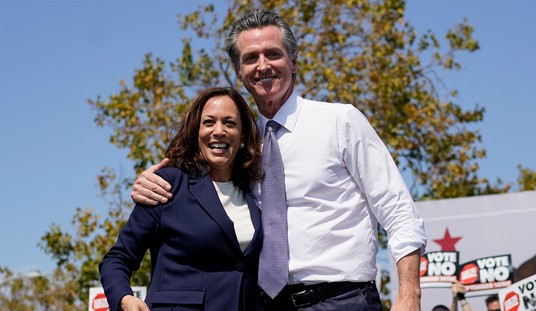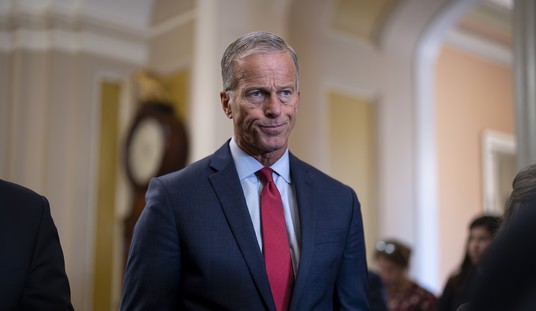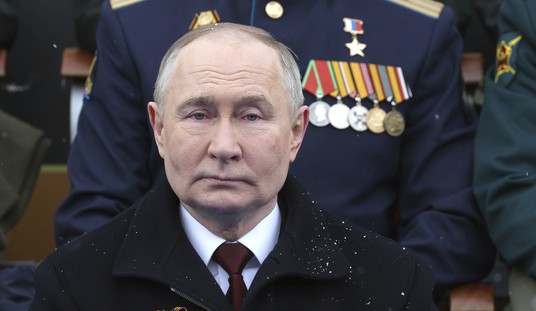Last week, it was revealed that the government workers’ union AFSCME is spending $87.5 million to try to keep Democrats from being defeated on November 2nd. Interestingly, some people seemed shocked by this. They really shouldn’t be though.
For decades, America’s union bosses have touted a desire to be more like their European counterparts and they’ve figured out the only way for them to accomplish this is through the political process. As November 2nd quickly approaches, however, the headlines across Europe should give Americans who are footing the bill for the government workers some pause before traipsing down the path to Paris.
- France Paralyzed as Strikes Enter Day 12, screams the Aletho News
- Sarkozy sets the heavy squad on the riots as demonstrations over French pension reforms continue for ninth day, was the Daily Mail’s headline last week.
[youtube]http://www.youtube.com/watch?v=siORM_RXknc&feature=player_embedded#![/youtube]
When it comes to belt tightening, socialism’s apologists (both here and abroad) complain about the ‘breaking of the social contract.’ However, with government unions, the social contract that is talked about is one thatthey themselves have written by gaming the system by electing politicians who have very little regard for who pays the bill—the taxpayer.
At What Cost?
Here in the United States, the union business is a huge industry that rakes in tens of billions every year in union dues. As unions rely more than ever on government largesse, like any special interest group, they are spending hundreds of millions in this election cycle to buy advertising and AFSCME’s $87.5 million is really just a drop in the bucket.
When it comes to union money in politics, as other government unions like the NEA, AFT, UFT, SEIU, AFGE, NAGE, IAFF, and others pour money into the political process, the actual figures are staggering. Several years ago, the National Institute for Labor Relations Research estimated that unions spent $925 million on the 2004 elections. Since then, it’s only gotten more pervasive.
None of this political spending has come without cost to the American taxpayer. As the Heritage Foundation’s James Sherk has noted, public-sector unions have created a behemoth with a high cost to taxpayers:
- Federal workers make an average 22% more than similar private-sector workers (who pay federal workers’ salaries)
- Federal workers’ wages and benefits will cost taxpayers $47 billion in 2011
- State and local retiree health care and pensions are underfunded $3.1 trillion (as compared to $165 billion in underfunded private-sector union pension plans)
- Government unions, nationwide, are campaigning for higher taxes
Breaking the Stranglehold of Government Unions
Recently, there have been a number of comments and questions from readers suggesting that there must be a way to end the stranglehold that public-sector unions have on the economy. There is. However, in order to do so, there has to be broader understanding among Americans as to the cost and ramifications of having government unions controlling the government, as well as more courage and resolve from politicians. It also helps to understand how government unions came to be.
As odd as it may seem, even labor’s most infamous government benefactor, President Franklin Roosevelt, was against the formation of government unions:
“Meticulous attention,” the president insisted in 1937, “should be paid to the special relations and obligations of public servants to the public itself and to the Government….The process of collective bargaining, as usually understood, cannot be transplanted into the public service.“
So, how did government unions come to be?
At the federal level, government unions came to being as a result of President Kennedy’s 1962 Executive Order 10988. Yes, you read that right. Unions in the federal government were created not by law but by Executive Order.
However, four years earlier it was New York City Mayor Robert F. Wagner, Jr.* who first established collective bargaining in the public-sector. Writer Jeff Jacoby gives a concise history of government unionism as follows:
In the late 1950s, however, the consensus against public-sector unions began to collapse. In 1958, New York City Mayor Robert Wagner Jr.* issued an order allowing public employees in the city to unionize and bargain collectively. The following year, Wisconsin became the first state to enact a public-sector collective-bargaining law. On January 17, 1962, President John F. Kennedy signed Executive Order 10988, which granted bargaining rights to federal employees. Around the country, an avalanche of public-sector bargaining laws followed. “Membership in public unions rose exponentially,” writes journalist Roger Lowenstein in a recent book chronicling the explosion of pension debt in American life.
Virtually proscribed only a decade earlier, by the mid-’60s these unions had been transformed into lobbying powerhouses with salaried staffs, hired lawyers, in-house newspapers, and (just in New York City alone) a quarter of a million dues-paying members.
[*Note: Ironically, Robert F. Wagner, Jr. was the son of U.S. Senator Robert Wagner who sponsored the 1935 Wagner Act, otherwise known as the National Labor Relations Act, that established collective bargaining for private sector workers.]
Union power at the state level has been granted primarily through state legislatures that have passed ‘collective bargaining laws.’ However, even in certain states that do not have collective bargaining laws, some unions like the NEA have created programs and products that attract members to their unions. The NEA (through its affiliates), for example, has created an insurance program for teachers to insure them against accusations or lawsuits made by students.
Today, as AFSCME’s full name suggests, government unions have permeated every level of government—at the federal, state, county and even the municipal level. Moreover, there are literally dozens of unions that represent government workers. In fact, even the Teamsters represent police officers in certain jurisdictions.
What will it take?
Unfortunately, not since Ronald Reagan (with the exception of New Jersey’s governor Chris Christie) has there been a politician that has the strength to openly discuss the negative affects the government unions have wrought upon America’s fiscal house. That, however, is beginning to change and, barring any more Chris Christies being elected, the time will soon come where politicians may be forced to address the government union crises.
California’s Karma. If Jerry Brown wins California’s governorship next week, it is only fitting that he will be at the helm of the ship when it sinks. As Brown gave California’s government unions the power to run California into the ground more than 30 years ago, he may very well be the captain that goes down with the ship and Meg Whitman may be able to stand back and say, ‘See? I told you so.’
It won’t be pretty, but California’s troubles are coming to a head sooner than in most states and the instability that it will cause in California may be enough to awaken more politicians across the country to follow in Chris Christie’s footsteps, rather than Jerry Brown’s.
Like that which has already happened in New Jersey, as well as California, government union workers will take to the streets in protest, they’ll spend millions on ads condemning the politicians, claiming it’s “union-busting” and all other forms of chicanery. The problem with their obfuscation is that it is self-serving and ultimately self-defeating.
At the state and municipal levels, citizens must become more aware of the true cost of government unions and actively begin countering politicians that give government unions the purse strings.
Of course, it starts at the precinct level, and goes up to the state legislature level as well. But as long as government unions control state houses, there will continue to be financial payouts and burdens that the taxpayers will be stuck with.
Regaining control of the government from unions like AFSCME and the SEIU first begins at the ballot box. At the federal level, with a President with the fortitude of a Ronald Reagan or Chris Christie, who can stand up to the union bosses, it would not take an ‘act of Congress’ but the stroke of the pen.
If push comes to shove and federal unions are not willing to stop breaking the backs of the public they serve, then repealing Kennedy’s 1962 Executive Order may be the only solution. By repealing Executive Order 10988, it would effectively eliminate the unions’ collective bargaining rights with the federal government and end the stranglehold at the federal level.
Like so many other things in today’s welfare state society, there is nothing in the U.S. Constitution that mandates collective bargaining. While workers have the freedom of association, that freedom to associate does not mean that government should (through collective bargaining) walk down the perilous path that has entangled Europe to become the unsustainable nanny state that it has.
As the founder of the American Federation of Labor, Samuel Gompers, so eloquently stated in the Amercian Federationist 95 years ago:
The virile spirit that has given our young nation a foremost place among the nations of the world is the spirit of aggressive initiative and independence the ability of our people to grapple with hard problems and to solve them for their own benefit and for the benefit of the nation. We must not as a nation allow ourselves to drift upon a policy of excessive regulation by legislation—a policy that eats at and will surely undermine the very foundations of personal freedom.
As Americans, do we really want to become another Europe? If not, then we must correct the course we are on before it is too late.
That course correction can begin on November 2nd.
__________________
“I bring reason to your ears, and, in language as plain as ABC, hold up truth to your eyes.” Thomas Paine, December 23, 1776















Join the conversation as a VIP Member